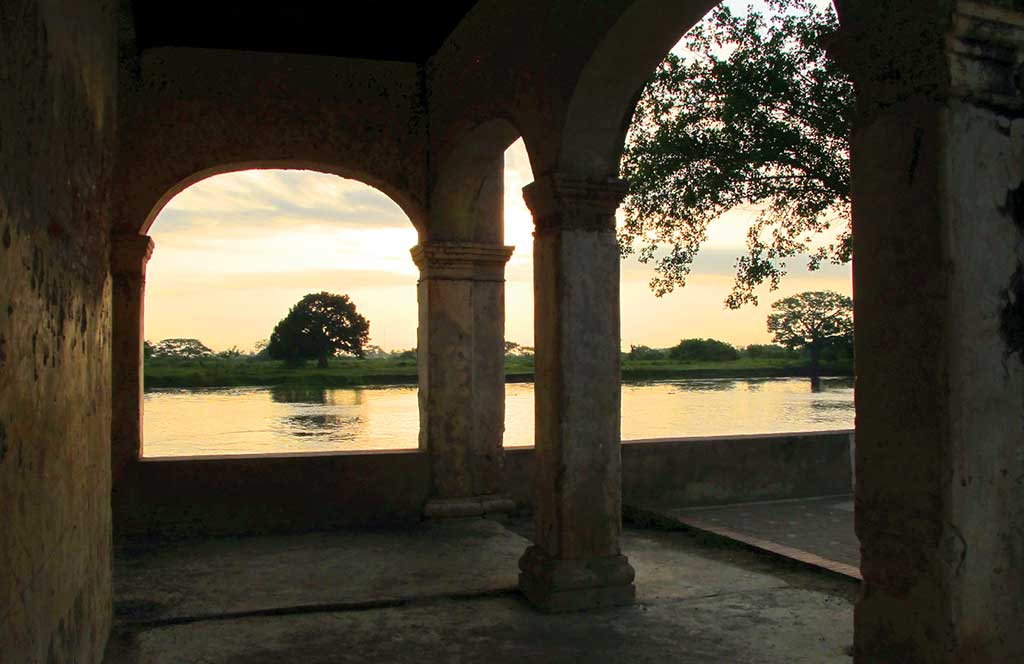This town, founded in 1540 on the eastern edge of a large island between two branches of the Río Magdalena (the Brazo de Loba and the Brazo Mompox), was an opulent center of trade, connecting the interior of the country with Cartagena during the colonial era. But then the mighty river changed its course in the late 18th century. Mompox’s importance steadily declined, never to return.
The only museum in town is the Museo Cultural de Arte Religioso, which has displays of gold- and silverwork from the colonial era.Mompox is what Cartagena looked like before it became a tourist destination, and it’s hard to deny the melancholic charm this oppressively hot town retains even today. The attraction here is strolling the wide streets, admiring the magnificent whitewashed houses decorated with intricate iron latticework, and watching the river flow by. In 1995, because of its architectural importance, it was declared a UNESCO World Heritage Site.
The picturesque Río Magdalena runs through Mompox. Photo © Andrew Dier.
The town is spread out along the river. It does not have a central plaza, but three squares, each with a church, facing the river. It is believed that each of these squares is on the location of a former indigenous settlement. From south to north these are: Plaza de Santa Bárbara, Plaza de la Concepción (also known as Plaza Mayor), and Plaza de San Francisco. Three main streets run parallel to the river: Calle de la Albarrada (which corresponds to Carrera 1) facing the river; the Calle Real del Medio, Mompox’s main street, one block west of the river; and the Calle de Atrás (literally, the “street behind”).
There are two historical churches worth visiting in Mompox. However, they are only regularly open during mass times. Nonetheless, the Casa Amarilla can call the church to request that someone open up the doors so that you can take a quick peek. The Iglesia de Santa Bárbara (Cl. de la Albarrada and Cl. 14, mass 4pm Sun.), built in 1630, is well worth a visit. The facade is painted a striking yellow, with colorful floral decorations. It has an unusual baroque octagonal tower with a balcony wrapping around it. Inside, it has a magnificent gilded altar. Another noteworthy church is the Iglesia de San Agustín (Cl. Real del Medio and Cl. 17, masses 7pm daily, with additional 9am mass on Sun.), which houses the Santo Sepulcro, a gilded reproduction of Christ’s tomb, which is carried through the streets during Semana Santa.
The only museum in town is the Museo Cultural de Arte Religioso (Cl. Real del Medio No. 17-07, tel. 5/685-6074, 9am-noon and 3pm-4pm Tues. and Thurs.-Fri., 9am-noon Sat.-Mon., COP$2,000), which has displays of gold- and silverwork from the colonial era. Mompox silver- and goldsmiths made a name for themselves with their intricate filigree jewelry. Another interesting sight is the Piedra de Bolívar (Cl. de la Albarrada and Cl. 17), a monument facing the river with a stone slab that lists all the visits Simón Bolívar made to Mompox. Finally, Mompox’s atmospheric 19th-century Cementerio Municipal (Cl. 18 and Cra. 4, 8am-noon and 2-5pm daily, free) is well worth a detour.
Excerpted from the First Edition of Moon Colombia.